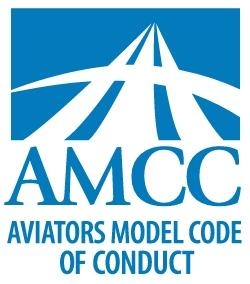Sat, Jan 05, 2013
Abridged And Simplified For A Younger Audience
"Teaching the Aviators Model Code of Conduct to Kids," an abridged and simplified explanation of the Aviators Model Code of Conduct (AMCC), was released Thursday by the project’s Permanent Editorial Board. Written for use in the classroom with language appropriate for children, the document exposes young students to important values shared by safe and successful aviators.

“Think Global Flight and Teaching the Aviators Model Code of Conduct to Kids will bring awareness of the boundless opportunities within the aviation and aerospace industries to the classrooms around the world," said Judith A. “Captain Judy” Rice, founder of Think Global Flight. "The AMCC will introduce students to what it takes to be a good pilot, to fly safely, and be a good passenger if they take a ride in a small plane. Learning the basic rules of flying will help them succeed in many areas of their lives—as students now, and as adults in the future.”
Developed by a team of aviation professionals and drawing upon decades of research and experience, the AMCC promotes ongoing improvements in flying quality and safety. The AMCC:
- Promotes flight and ground safety, professionalism, and pilot contributions to the aviation community and society at large.
- Encourages the development and adoption of good judgment, ethical behavior, and personal responsibility.
- Supports improved communications between pilots, regulators, and others in the aviation industry.
The Code of Conduct has received extensive industry review and presents a vision of aviation excellence within its seven sections: (1) General Responsibilities of Aviators; (2) Passengers and People on the Surface; (3) Training and Proficiency; (4) Security; (5) Environmental Issues; (6) Use of Technology; (7) Advancement and Promotion of Aviation. The Code is a living document and will be periodically updated to reflect changes in standards, practice, and the aviation environment.
The Aviators Model Code of Conduct anchors a family of similar codes including the Aviation Maintenance Technicians Model Code of Conduct, the Flight Instructors Model Code of Conduct, the Glider Aviators Model Code of Conduct, the Light Sport Aviators Model Code of Conduct, the Seaplane Pilots Model Code of Conduct, and the Student Pilots Model Code of Conduct. Developed as a volunteer effort, each is available as a free public service along with supporting materials online.
More News
Light Gun A handheld directional light signaling device which emits a brilliant narrow beam of white, green, or red light as selected by the tower controller. The color and type of>[...]
"The journey to this achievement started nearly a decade ago when a freshly commissioned Gentry, driven by a fascination with new technologies and a desire to contribute significan>[...]
Aero Linx: JAARS, Inc. For decades now, we’ve landed planes on narrow rivers and towering mountains. We’ve outfitted boats and vehicles to reach villages that rarely se>[...]
"Our driven and innovative team of military and civilian Airmen delivers combat power daily, ensuring our nation is ready today and tomorrow." Source: General Duke Richardson, AFMC>[...]
Aircraft Conflict Predicted conflict, within EDST of two aircraft, or between aircraft and airspace. A Red alert is used for conflicts when the predicted minimum separation is 5 na>[...]
 ANN's Daily Aero-Term (04.20.24): Light Gun
ANN's Daily Aero-Term (04.20.24): Light Gun Aero-News: Quote of the Day (04.20.24)
Aero-News: Quote of the Day (04.20.24) ANN's Daily Aero-Linx (04.21.24)
ANN's Daily Aero-Linx (04.21.24) Aero-News: Quote of the Day (04.21.24)
Aero-News: Quote of the Day (04.21.24) ANN's Daily Aero-Term (04.21.24): Aircraft Conflict
ANN's Daily Aero-Term (04.21.24): Aircraft Conflict



